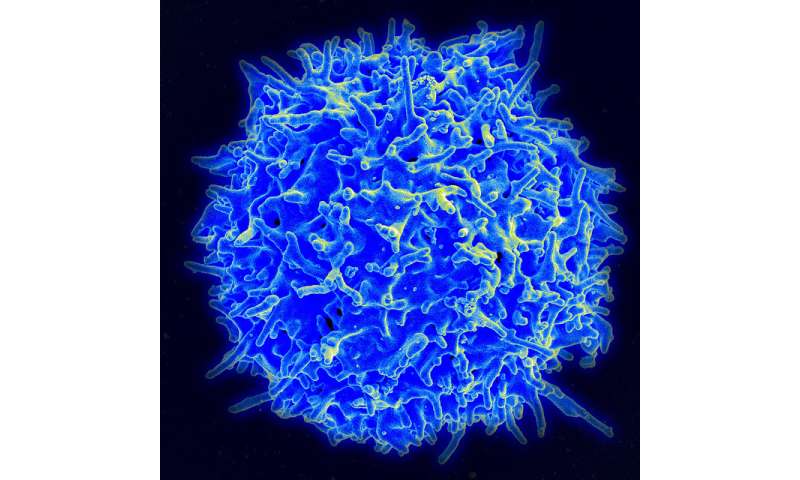
Like separate entrance and exit doors on a building, a cell’s outer surface has its own doors—channels, pumps, and transporters that selectively control what molecules may enter or exit. In the immune system, T cells—essential players in immune regulation—possess unique sets of these doors, including a set that specializes in the movement of calcium ions.
Now, for the first time, researchers at the Lewis Katz School of Medicine at Temple University (LKSOM) describe a unique mechanism for coordinating these calcium entrance and exit “doors” on T cells that helps them to carry out their jobs and ensure normal immune function. The study, published online October 8 in the journal Science Signaling, offers new insight into calcium signaling that could help scientists better understand the signaling mechanisms underlying autoimmune and immunodeficiency diseases, many of which involve abnormal T-cell activation.
“Calcium signals are universal to all cells in our bodies,” explained Jonathan Soboloff, Ph.D., Professor of Medical Genetics and Molecular Biochemistry at the Fels Institute for Cancer Research and Molecular Biology at LKSOM. “In the immune system, however, T cells exhibit unique ways to control calcium signals so that when activated by an antigen, a sustained increase in intracellular calcium levels can be used to drive T cell activation.” In individuals with normally functioning immune systems, T cell activation is good, because it helps the body fight off infection.
One of the main doors through which calcium enters T cells is a channel called Orai1. The main “exit” door is a calcium pump called PMCA, or plasma membrane calcium ATPase. Since sustained, elevated calcium levels drive T cell activation, these pumps have long been thought to terminate T cell responses.
It turns out that the PMCA calcium pump does not act alone. Sustained Orai1 activation represents a significant challenge because the calcium that it lets in tends to turn it back off again. However, a third protein, known as POST, links PMCA and Orai1 in activated T cells. That linkage allows the pump to protect Orai1 from elevated calcium and thereby stay open longer, thereby promoting T cell activation.
Sustained Orai1 activation is critical to the activation of a transcription factor called NFAT. Transcription factors convert, or transcribe, genetic information from DNA to RNA by attaching themselves to DNA sequences. This process allows cells to respond to environmental stimuli. NFAT binds to specific DNA sequences in immune cells, where it drives T-cell-mediated immune activity. “The PMCA pump, POST, and the calcium channel Orai1 work together to fine-tune NFAT activation,” Dr. Soboloff explained. “Signaling between these molecules allows T cells to respond very efficiently to infection.”
Source: Read Full Article
